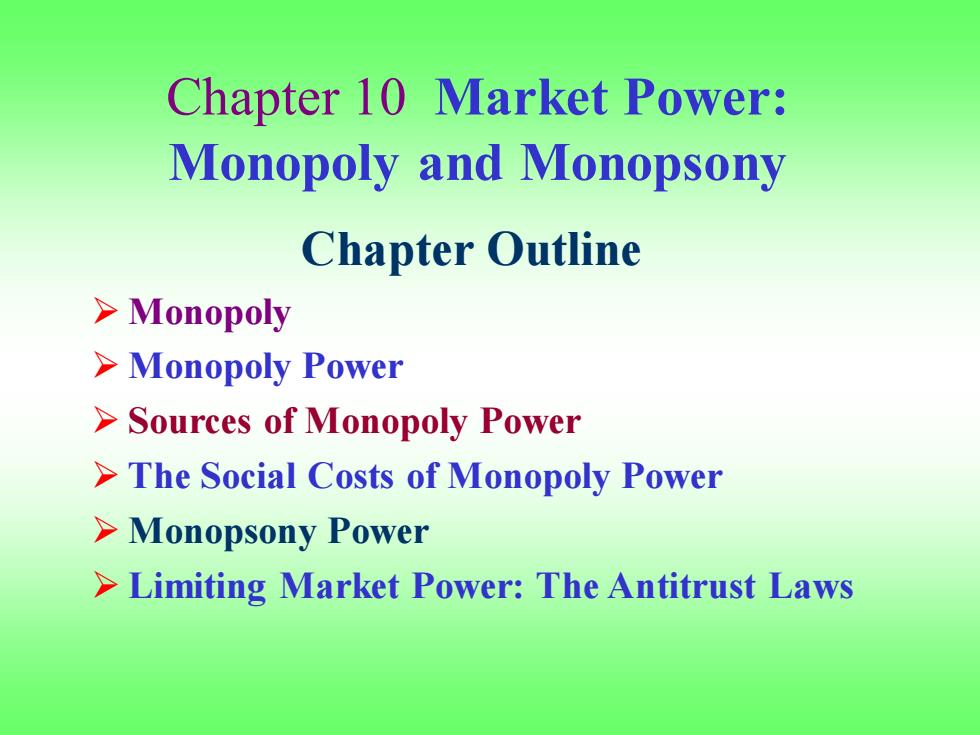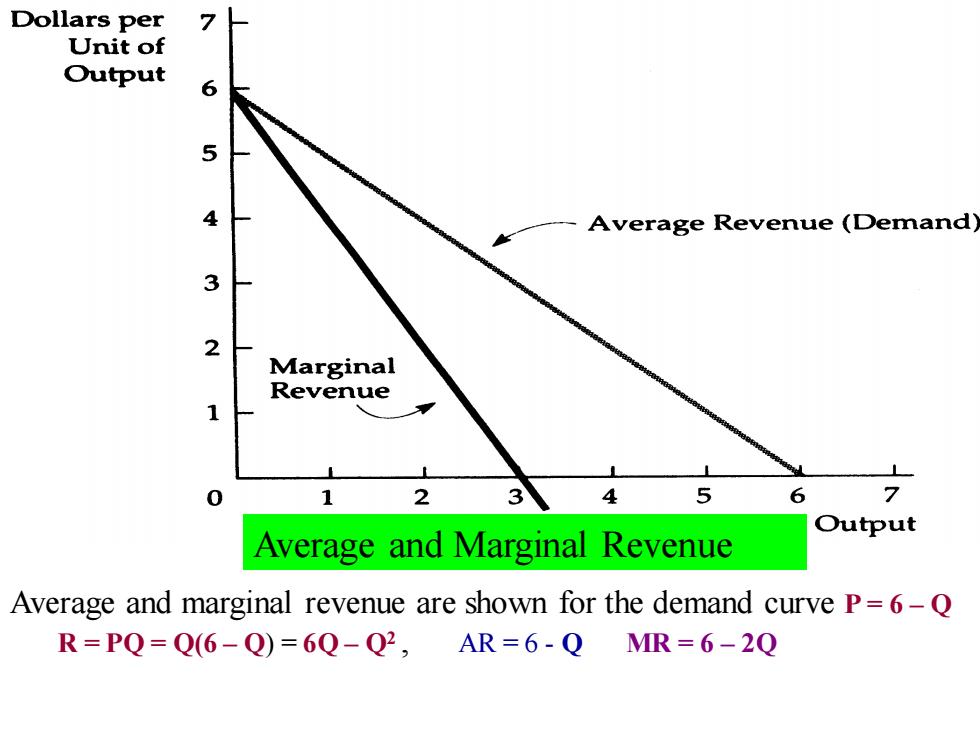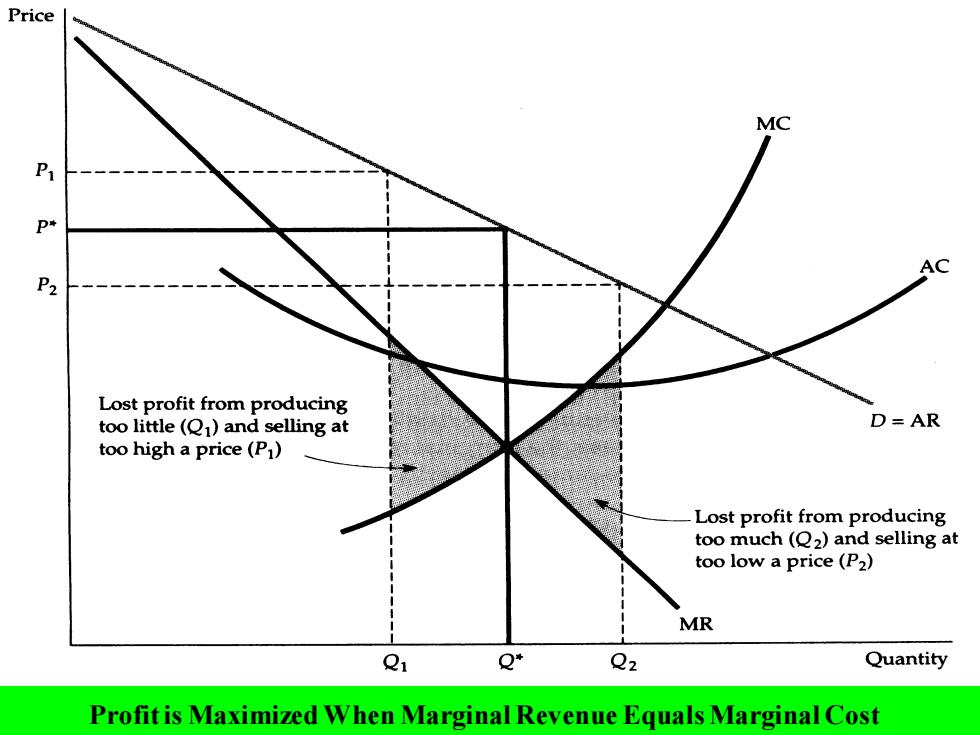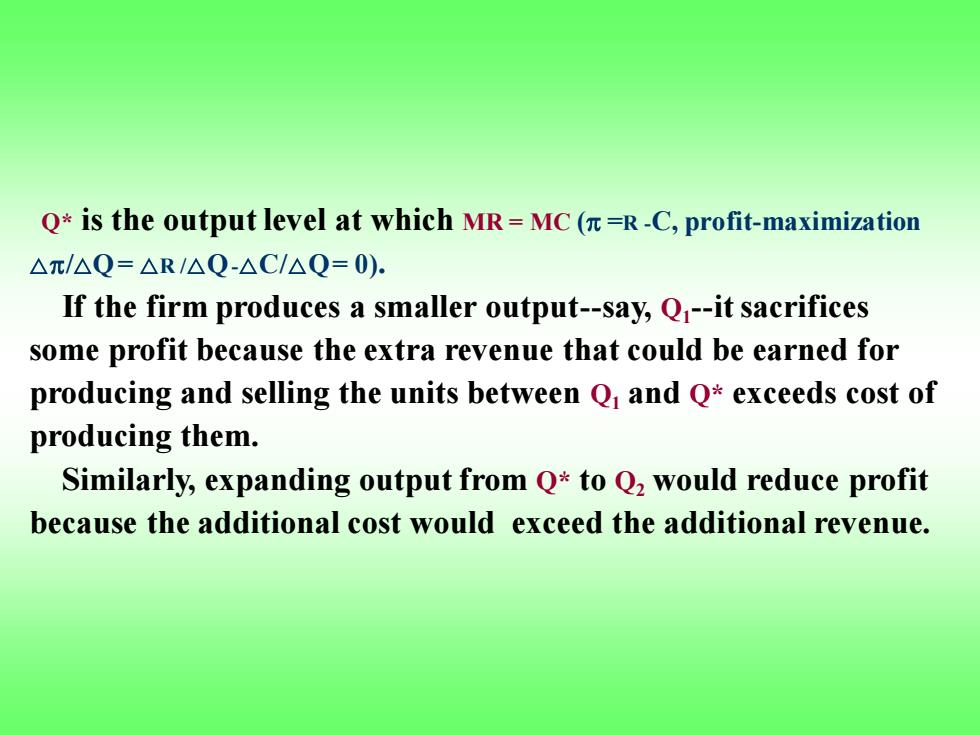
Chapter 10 Market Power: Monopoly and Monopsony Chapter Outline Monopoly Monopoly Power >Sources of Monopoly Power >The Social Costs of Monopoly Power Monopsony Power Limiting Market Power:The Antitrust Laws
Chapter 10 Market Power: Monopoly and Monopsony Chapter Outline ➢ Monopoly ➢ Monopoly Power ➢ Sources of Monopoly Power ➢ The Social Costs of Monopoly Power ➢ Monopsony Power ➢ Limiting Market Power: The Antitrust Laws

10.1 Monopoly Monopoly-Market with only one seller Monopoly power-The ability of a firm to profitably charge a price higher than marginal cost. Monopsony-Market with only one buyer. Monopsony power-Buyer's ability to affect the price of a good. Marginal revenue-Change in revenue resulting from a 1 unit increase in output
10.1 Monopoly Monopoly - Market with only one seller Monopoly power - The ability of a firm to profitably charge a price higher than marginal cost. Monopsony - Market with only one buyer. Monopsony power - Buyer’s ability to affect the price of a good. Marginal revenue - Change in revenue resulting from a 1 unit increase in output

Dollars per Unit of Output 6 4 Average Revenue(Demand) 3 2 Marginal Revenue 1 0 1 2 3 4 5 6 7 Output Average and Marginal Revenue Average and marginal revenue are shown for the demand curve P=6-Q R=PQ=Q(6-Q)=6Q-Q2,AR=6-Q MR=6-2Q
Average and Marginal Revenue Average and marginal revenue are shown for the demand curve P = 6 – Q R = PQ = Q(6 – Q) = 6Q – Q2 , AR = 6 - Q MR = 6 – 2Q

Price MC P1 P2 Lost profit from producing too little(Q1)and selling at D=AR too high a price(P1) Lost profit from producing too much(Q2)and selling at too low a price(P2) MR Q1 Q+ Q2 Quantity Profit is Maximized When Marginal Revenue Equals Marginal Cost
Profit is Maximized When Marginal Revenue Equals Marginal Cost

Q*is the output level at which MR=MC (n=R-C,profit-maximization △π/△Q=△R/△Q-△CI△Q=0). If the firm produces a smaller output-say,Q-it sacrifices some profit because the extra revenue that could be earned for producing and selling the units between Q and Q*exceeds cost of producing them. Similarly,expanding output from Q*to Q2 would reduce profit because the additional cost would exceed the additional revenue
Q* is the output level at which MR = MC ( =R -C, profit-maximization △/△Q = △R /△Q-△C/△Q= 0). If the firm produces a smaller output-say, Q1 -it sacrifices some profit because the extra revenue that could be earned for producing and selling the units between Q1 and Q* exceeds cost of producing them. Similarly, expanding output from Q* to Q2 would reduce profit because the additional cost would exceed the additional revenue